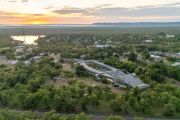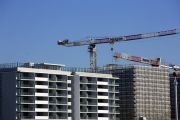
Lighthouse gets $130m social loan from CBA, NAB
Fund manager Lighthouse Infrastructure has secured a so-called social loan of $130 million from Commonwealth Bank and National Australia Bank to boost its provision of specialist disability accommodation funding, the first loan of its type in Australia for a housing sector that could grow to $10 billion in value.
Lighthouse, which had built up a portfolio of 188 homes with 400 places with equity from investors, could take out the loan after establishing rental revenue flows from the subsidised housing to support the loan repayments, Lighthouse managing director James Hooper said.

Lighthouse would use the funds to invest in the development of more homes, for which qualifying residents with disability receive subsidies under the National Disability Insurance Scheme, Mr Hooper said.
“We have a minimum $330 million in committed investment capacity of investors’ equity and further leverage, including social loans,” he told The Australian Financial Review.
“This will be on top of the $260 million we have already deployed in the form of equity and debt to develop SDA [specialist disability accommodation] assets.”
CBA and NAB are funding the Lighthouse loan in equal part. It will allow the fund manager to expand the assets of its evergreen Australian Disability Accommodation Projects Trust 2 Fund, already backed by investor Victorian Funds Management Corporation.
The deal shows the role social loans can play as an extra source of financing and in boosting Australia’s housing diversity, but it also lays bare the complications for developers and lenders.
The SDA sector was likely to need $10 billion worth of investment to meet the demand that the National Disability Insurance Agency last month predicted would grow from 22,900 participants last year to 36,700 by 2042, Mr Hooper said.

But the housing is not uniform – it can take a range of forms, including apartments in larger developments or stand-alone houses in suburban areas, all with varying subsidies – and this makes it harder to package into revenue streams that can be borrowed against.
“It’s not an easy task,” Mr Hooper said. “When it comes to social assets … [they are] very disaggregated and small in size. Social financing generally faces a lack of scale. But we are eager to support its growth.”
Social loans – tied to a specific purpose and with a defined target population – are still new in Australia. There have only been four so far; the first last year was an $840 million facility co-ordinated by CBA to provider APM Human Services.
They are more widely used in a market such as the UK, where social and affordable housing projects accounted for £5.1 billion of £9.4 billion worth of outstanding social impact investments last calendar year, data from provider Big Society Capital shows.
Australian banks are interested in growing the asset class. NAB, which in November 2019 set out a goal of investing $2 billion under its affordable housing “umbrella”, reached a total of $3.6 billion late last year and now plans to invest a further $6 billion over the next decade.

“In terms of social loans that could be in the billions – $1-2 billion I could easily see that being the case,” NAB group executive for corporate and institutional banking David Gall told the Financial Review.
Social investing – governed by principles of the Asia Pacific Loan Market Association – could also expand to bond products, Mr Gall said.
“As the opportunity grows, I could see that being taken and put into a social bond that would make it available to a much broader range of investors actively looking for this type of investment in their portfolio,” he said.
Andrew Hinchliff, CBA’s group executive for institutional banking and markets, agreed there was scope for growth.
“Over time, we hope to see social loans attract institutional capital to Australia’s social infrastructure in the same way that green capital has done for green assets,” Mr Hinchliff said.











